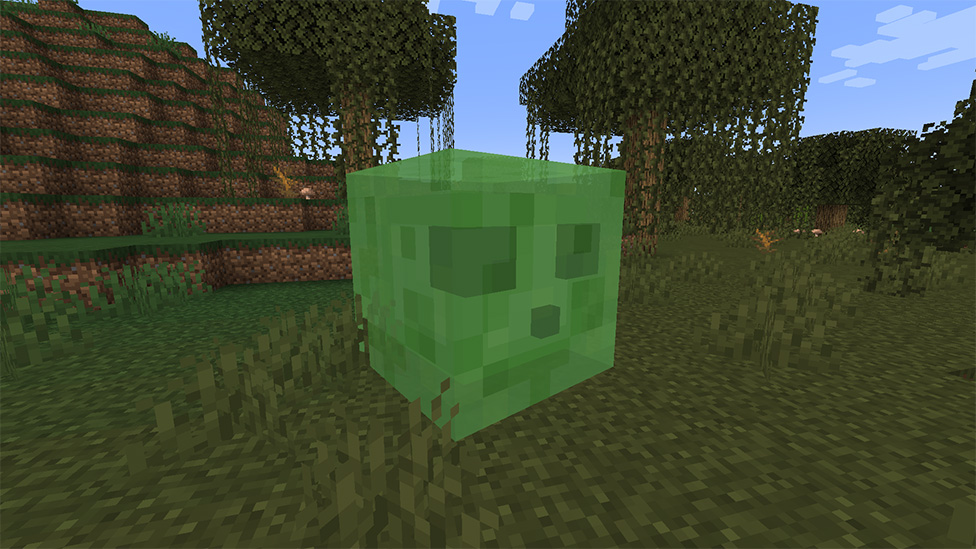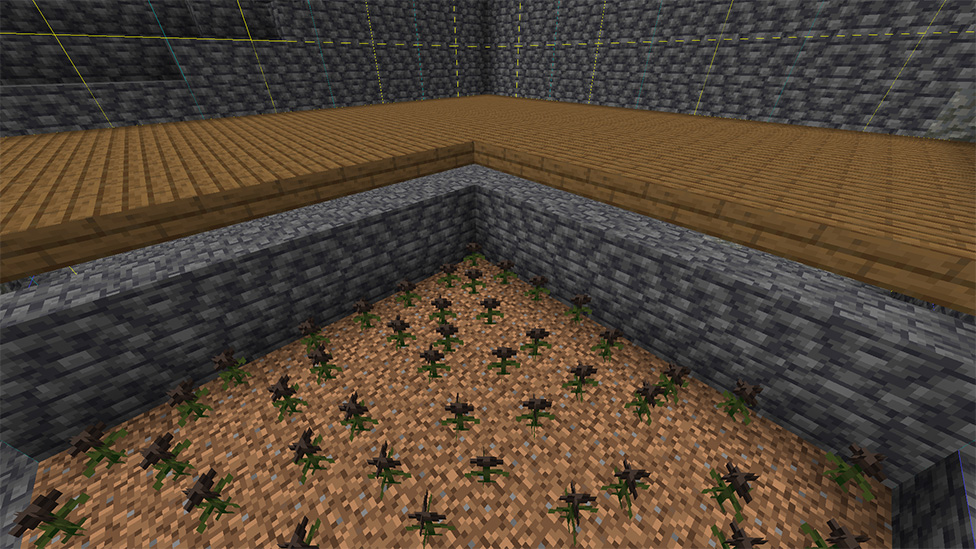How to Make a Slime Farm in Minecraft
Make Your Own Minecraft Server For Free
Your own Minecraft server is only 5 minutes away! We support simple one click install for over 1000 unique modpacks.
Free Minecraft Server Hosting

Understanding Slimes in Minecraft
Venturing into the blocky realms of Minecraft, one encounters various creatures, but none as unique as the slimes. These bouncing green blobs, introduced early in the game's history, have more to offer than meets the eye. Slimes, primarily found in specific biomes and conditions, drop 'slimeballs' upon defeat. These slimeballs are the backbone of several crafting recipes that enhance gameplay. From creating sticky mechanisms with sticky pistons to leading your animals with leads, slimeballs prove their worth in the Minecraft universe. Understanding the value and uses of slime in Minecraft sets the foundation for why establishing a dedicated slime farm is not just beneficial, but essential for any serious crafter or adventurer.Materials Needed for a Slime Farm
Before embarking on your slime farming journey, it's crucial to gather all the necessary materials. To create an efficient farm, you'll need a variety of items, starting with the basics: pickaxes and shovels for excavation. As you delve deeper, you'll require more specialized items like slabs, torches, and hoppers to manage the spawning and collection of slimes. Iron golems play a pivotal role in luring slimes, so stock up on iron blocks. Don't forget about campfires and chests to handle the slimeball collection process. Preparing these materials beforehand ensures a smooth construction process, saving you from mid-build scavenger hunts. Remember, a well-prepared farmer is a successful farmer in the world of Minecraft!Finding a Slime Chunk

The cornerstone of building a successful slime farm is locating a slime chunk. In Minecraft, the world is divided into chunks, each 16x16 blocks, extending from the sky to bedrock. Among these, certain chunks are designated as 'slime chunks,' were slimes spawn naturally and abundantly. Identifying these elusive chunks is a game of strategy and patience. Players can use online tools where they input their world seed to find nearby slime chunks. Alternatively, the adventurous can embark on a trial-and-error expedition, searching for these chunks by observing slime spawning patterns. Once you've pinpointed a slime chunk, mark it. This will be the epicenter of your future slime farm, a hub for all your slimeball needs.
Constructing the Slime Farm
With a slime chunk in your sights, it's time to roll up your sleeves and start building. First, excavate the chunk area below Y-level 40. This depth is crucial as it's the sweet spot for slime spawning. Ensure you clear out every block within the chunk to maximize efficiency. Next, focus on spawn-proofing the surrounding areas. Light up nearby caves and tunnels with torches to prevent other mobs from affecting slime spawn rates. Now, let's set the stage for your slime farm. Start by creating a flat floor using slabs. This prevents other mobs from spawning, while still allowing slimes to appear. Place jack-o-lanterns or other light sources to maintain visibility. Construct an iron golem in a strategic position to attract the slimes. Surround your golem with fences for safety, ensuring it stays in place to do its job.
The final step involves setting up a collection system. Place campfires covered with hoppers leading to chests. As slimes are lured to the golem, they'll get caught on the campfires, drop slimeballs, which are then funneled into the chests. With this setup, you'll have a continuous supply of slimeballs, ready for all your crafting needs.
Enhancing Your Slime Farm Efficiency
To elevate your slime farm from good to great, consider a few expert tips for boosting efficiency. One effective strategy is creating multiple spawning platforms within the same slime chunk. Stack several layers of spawn platforms, each separated by three blocks in height, allowing slimes of different sizes to spawn. This vertical expansion significantly increases the spawn rate and yield of your farm.
Another key aspect is player positioning. Slimes will only spawn if you are at least 24 blocks away but will despawn if you're over 32 blocks distant. Finding the sweet spot for your AFK (Away from Keyboard) spot is crucial to keep the slimes spawning consistently. Additionally, consider incorporating an AFK fishing spot within this range. It's a productive way to pass the time while waiting for your slimeballs to accumulate.
Finally, regular maintenance of your farm is essential. Ensure your light sources are functioning, and your collection system is clear of any blockages. A well-maintained farm guarantees maximum efficiency and output.
Final thoughts
Building a slime farm in Minecraft is a rewarding project, offering a steady supply of slimeballs for your crafting endeavors. While the process requires effort in terms of gathering materials, excavating, and setting up, the payoff in resources is invaluable. For an enhanced gaming experience, consider hosting your adventures on a dedicated Minecraft server with ScalaCube. A server not only smoothens gameplay but also offers a platform to share your slime farming successes with friends and fellow enthusiasts.FAQs
Why are slime farms important in Minecraft?
Slime farms are vital for providing a continuous supply of slimeballs, essential for crafting items like sticky pistons and leads, crucial for various Minecraft projects.
How do you locate slime chunks in Minecraft?
Slime chunks can be located by using online tools that require your world seed, or by observing slime spawning patterns in different chunks.
What is the most efficient way to construct a slime farm?
The most efficient slime farm construction involves thorough excavation of a slime chunk, spawn-proofing the surrounding area, and using iron golems and campfires strategically for maximum slimeball collection.
Make Your Own Minecraft Server For Free
Your own Minecraft server is only 5 minutes away! We support simple one click install for over 1000 unique modpacks.
Start Your Server For Free!
Copyright 2019-2025 © ScalaCube - All Rights Reserved.